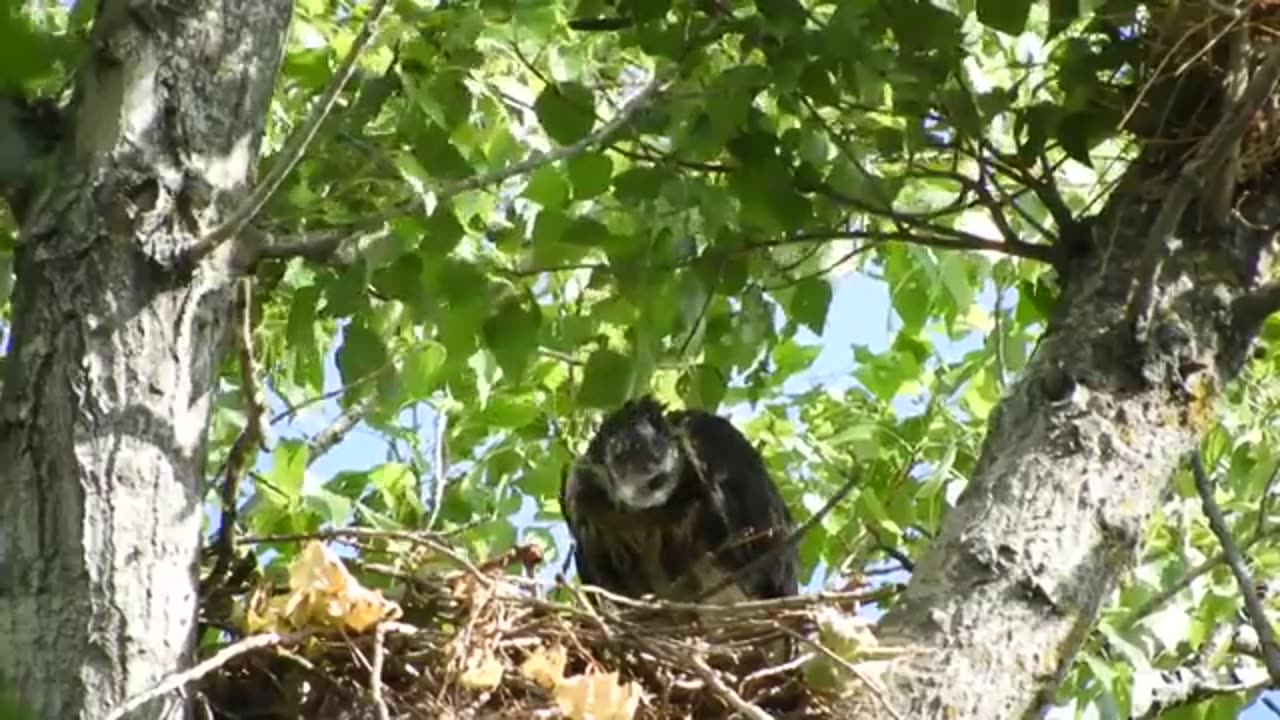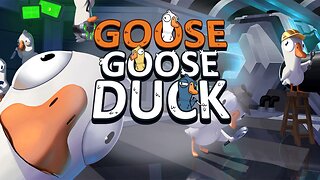Premium Only Content

Things you need to know about BUZZARDS!
Find out everything you could ever want to know about common Buzzards including where buzzards live, what buzzards eat, where buzzards nest, how long buzzards live for and much more.
The common Buzzard is a medium to large bird of prey that lives from the west coast of Ireland all across Europe and central Asia as far west as Japan and is even found in eastern Africa. Females are slightly larger than males and grow to have a wingspan of around 4 and a half feet and can weigh up to 1.4 kilos.
Buzzards can be a wide variety of colours ranging from almost pure white to dark brown and black. They have a hook shaped beak with a bright yellow base and featherless yellow legs and feet. From below a buzzards silhouette shows a noticeable dark band around the edge of its wings and 5 primary feathers that extend from their ends.
Buzzards can be found in most countryside habitats but do extremely well in traditional farming areas. Here they have open fields for hunting and also hedgerows and trees for roosting and nesting.
They are capable hunters and often catch small rabbits, rodents and slower species of birds such as crows and wood pigeons but they are also opportunist scavengers and a large portion of their diet can be made up of carrion. Surprisingly, they also seem to have a taste for worms and can often be seen bounding across wet fields and meadows in search of them.
Buzzards start nesting from three years of age when each pair will claim a territory and construct multiple nests from large twigs either high up in trees or I rocky crags. They usually build 3 to 4 but can have as many as 14 nest sites to choose from. Once they have decided on which nest to use, the pair have a curious habit of decorating the chosen nest site with fresh green leaves and branches although the purpose of this isn’t really known. Each female will lay between 2 and 5 eggs at 2 to 3 day intervals. These are 5 to 6cm long and white with sporadic red markings. The female does most of the incubation and as this starts from when the first egg is laid the first chick to hatch will often be noticeably larger than its siblings. This usually takes 33 to 35 days and when the chicks first hatch they are covered in white down. Both parents feed the chicks and if food is in short supply, the larger and older chicks will bully and out compete their siblings. It takes 55 days for the chicks to fledge after which point they stay with their parents for a further 6 to 8 weeks, learning to find food and fend for themselves. Each pair will only breed once per season and will often pick a different nest from their collection each year.
Over the past 30 years Buzzards have done extremely well across most of Europe and there are now more than 300,000 breeding pairs in the UK alone. Although these are pretty hardy birds, as they are prone to scavenging they are quite susceptible to being accidently killed as a result of eating animals that have died after being poisoned or from eating poisoned bait. In the wild they have an average lifespan of between 12 and 20 years but one individual was found dead 30 years and five months after being ringed as a chick.
If you would like to see the original drone video of the buzzards in flight, that can be found here: https://www.youtube.com/watch?v=wJIjcmWnTcA
Some of the other footage and photographs used in this video were obtained using creative commons licences, the originals and their licence details can be found at:
https://www.youtube.com/watch?v=NzGIriW8uLE close up staring
https://www.youtube.com/watch?v=7raHZ8fesUQ shakey nest footage
https://www.youtube.com/watch?v=ZctnncQPPGo almost white in 360 but has 480 online
https://www.youtube.com/watch?v=69dOu8yQDi4 eating
https://www.youtube.com/watch?v=i-XY7iCu_Fk young birds on nest good
https://www.youtube.com/watch?v=FxfQwm2IEMo older birds nest good
https://www.youtube.com/watch?v=CyJT7aLF-QM catching and eating worm
https://www.youtube.com/watch?v=pC8SoMqcOpc sitting on post
https://www.youtube.com/watch?v=h1aYCrMqbnk pale morph in field
https://www.youtube.com/watch?v=fNErvB2avx8 fantastic nest footage from eggs to fledge
https://www.youtube.com/watch?v=k-FPUnIXcp0 on post and flying to worm
https://www.youtube.com/watch?v=IoyOF3dNdNo young in nest okay
Images: https://commons.wikimedia.org/wiki/File:Common_Buzzard_flying,_Switzerland.jpg
https://www.flickr.com/photos/128941223@N02/50206222581
#buzzard
#Buteobuteo
#birdsofprey
-

vivafrei
22 hours agoEp. 278: D.C. Peace Wave! Big Tish & Nipple Judge SPANKED! "Maryland Man" Trafficker FREE & MORE?
42.3K49 -
 LIVE
LIVE
Nerdrotic
2 hours ago $0.07 earnedMysteries of 3I/ATLAS | Forbidden Frontier #113
504 watching -
 LIVE
LIVE
RaikenNight
1 hour agoGoose Goose Duck then I am Building MInis
887 watching -
 11:52
11:52
Exploring With Nug
2 hours ago $0.03 earnedWhat’s Hiding Under This Dallas Lake We Found a Vehicle!
7.07K3 -
 LIVE
LIVE
Phyxicx
3 hours agoRocket League with Rance tonight! - 8/24/2025
34 watching -
 LIVE
LIVE
ManoloCalifas
22 minutes ago🔴 LIVE - DARK SOULS 3 SEAMLESS CO-OP
187 watching -
 2:59:09
2:59:09
Barry Cunningham
8 hours agoBREAKING NEWS: PRESIDENT TRUMP SET TO TAKEOVER CHICAGO AND BOSTON!
26.1K26 -

LumpyPotatoX2
3 hours agoSunday Funday on HellDivers - #RumbleGaming
9.56K -
 3:11:52
3:11:52
Esports Awards
5 hours agoEsports Awards: Decade Awards 2025
47.8K4 -
 1:02:58
1:02:58
Sarah Westall
3 hours agoMILITARY WHISTLEBLOWER: How Social Media Military Level Psyops are Manipulating You w/ Patrick Bergy
15.3K6